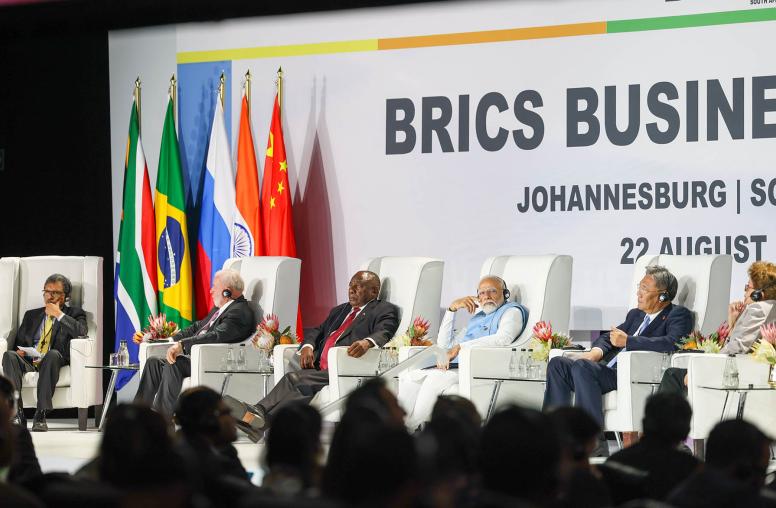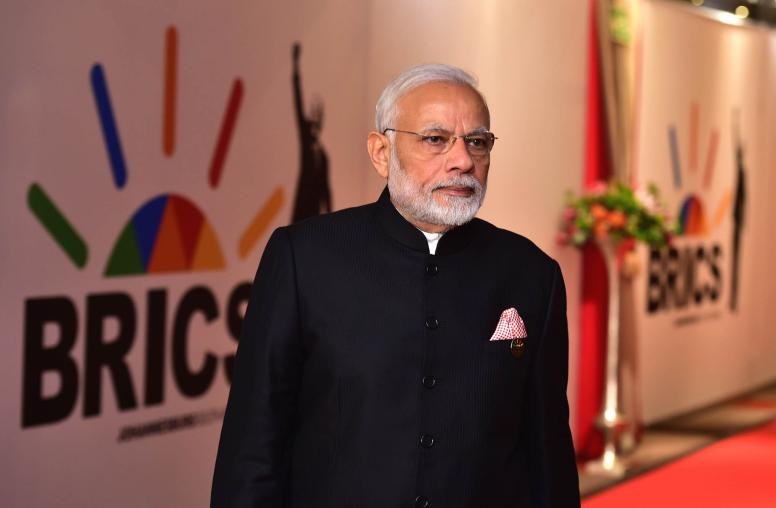Considering the Lessons of Mandela’s Legacy and South Africa’s Reconciliation
Though the politics and causes of conflicts differ significantly, the experience of South Africa’s peaceful, negotiated turn from racial apartheid to democratic majority rule suggests that a few principles exemplified by the late Nelson Mandela’s leadership are broadly applicable to other conflicts with hardened divisions, according to former participants in the South African transformation who gathered this week at the U.S. Institute of Peace (USIP).

The event, "One-time miracle or Exemplar?," was held January 15 and sponsored by the Institute and the nongovernmental organization Beyond Conflict to consider what aspects of the South African experience and Mandela’s work can provide lessons for other countries. Mandela, the former leader of the African National Congress (ANC) and then South Africa’s first black president, died at age 95 on December 5.
Although Mandela’s legacy and leadership style won tributes globally, “the relevance of South Africa to the rest of the world needs further attention,” noted Princeton Lyman, a USIP senior advisor who served as the U.S. ambassador to the Republic of South Africa from 1992 to 1995—critical years of South Africa’s transition. Elements of South Africa’s reconciliation have been cited as an actual or prospective model in such disparate conflicts as those in Northern Ireland, the Balkans, Sri Lanka, the Basque region of Spain and Bahrain, among others.
“Everything he [Mandela] did from the day he walked out of prison helped us overcome our own shortcomings,” said Roelf Meyer, the former chief negotiator for the once-ruling National Party who was then the minister of constitutional affairs. Those negotiations led to elections in April 1994, and the newly elected president, Mandela, asked Meyer to stay on as the constitutional affairs minister.
Meyer, now a management consultant who has worked on conflicts around the world, outlined three general principles from South Africa as having broad relevance to other conflicts. First, “the overarching principle was one of inclusivity—bringing everyone together,” he said. Second was an emphasis on “building trust” among the main players in the struggle—a huge challenge after 300 years of racial division in the country. And last, said Meyer, “We made it our own problem. We didn’t expect others to solve it for us.”
The South Africans, added Mohammed Bhabha, a senior ANC official who was part of the ANC’s negotiating team, made two key decisions that were unusual for parties to such a conflict but that laid the groundwork for a successful transition. The National Party voluntarily ceded its power, and the ANC as a revolutionary movement negotiated checks on its future power. “Both happened at the same time,” he said, adding that the effect was to avoid creating the sharp divide of “a victor or a vanquished.”
ANC leaders kept in mind that after the transition they would continue to share South Africa with the previously ruling whites behind the apartheid system. “Our enemy was with us and was going to stay with us and was as South African as we,” Bhabha said. At the same time, Mandela was able both to temper the expectations of South Africa’s long oppressed people for what would change quickly and to reassure whites whose fears were based in part on crude perceptions of their foes.
The negotiations were infused with a sense of the necessity of working together, said Ebrahim Rasool, South Africa’s ambassador to the United States. “We were forced to find solutions to every problem because we depended so much on each other,” said Rasool, who had been imprisoned for his political activism and went on to become a member of South Africa’s parliament and premier of the Western Cape Province. “We loved South Africa as much, I think, as our opponents did.”
Rasool singled out several factors in South Africa’s success: a focus on creating a constitution “that guards a nation against itself”; an insistence on not handing de facto veto power in the negotiations to any one entity; and, related, a reliance on the moderate middle from all sides through “the mechanism of sufficient consensus.”
Two emotions, in particular, needed to be tempered in the pursuit of such a shift in society and politics—victimhood and triumphalism, he said. “If you tear down trust, you’ve destroyed your interlocutor.”
Rasool said that in the worldwide mourning after Mandela’s death, there were signs of something more at work: “I actually found a yearning for that kind of leadership.”
The leadership, trust-building, inclusivity and peace instincts of Mandela and others who shaped South Africa’s renewal are relevant elsewhere, said Rasool. “We shouldn’t allow the idea of conflict specificities to block principles,” he added. “Extract the underlying principles that can be applied from situation to situation.”



